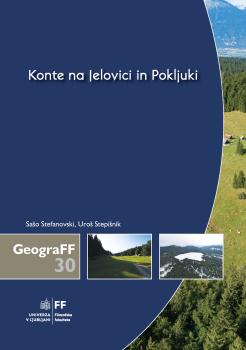Konte na Jelovici in Pokljuki
Keywords:
karst, glaciokarst, kontas, morphogenesis, periglacial kontas, subglacial kontasSynopsis
The Julian Alps are the highest and most massive mountain range in Slovenia. During their history they have been glaciated several times, the last glacial maximum being 21,000 years ago. The Julian Alps are composed mainly of limestone and dolomite. Due to the impact of the Pleistocene glacial period on the karst geomorphic system, the relief here can be referred to as glaciokarst. Glaciokarst is a relief type that has inherited elements of the previous glaciation of the karst relief, both on the surface and in the subsurface. One of these inherent elements are the kontas, i.e. larger depressions that occur on glaciokarst areas or in their immediate vicinity. The aim of this study was a geomorphological analysis of kontas on the Pokljuka and Jelovica plateaus and their morphogenetic interpretation. For this purpose, the literature on kontas was reviewed, the morphographic features of the kontas were characterized and analysed, and a morphometric and morphostructural analysis was performed. These findings formed the basis for our morphogenetic and morphodinamic interpretations of the kontas on the Jelovica Plateau and the Pokljuka Plateau. This study is the first systematic geomorphological analysis of the kontas in a given area in the national as well as international literature. It provides a new insight into Pleistocene relief change.
Downloads

Published
Series
Categories
License

This work is licensed under a Creative Commons Attribution-ShareAlike 4.0 International License.

